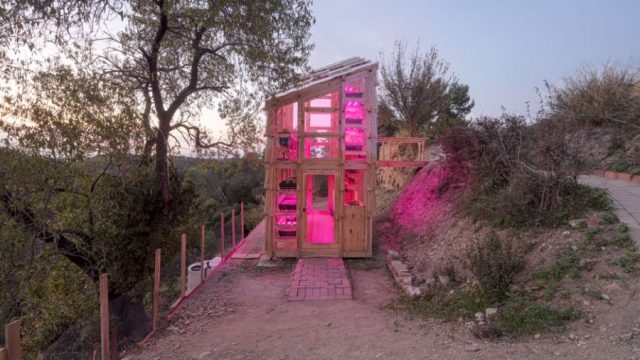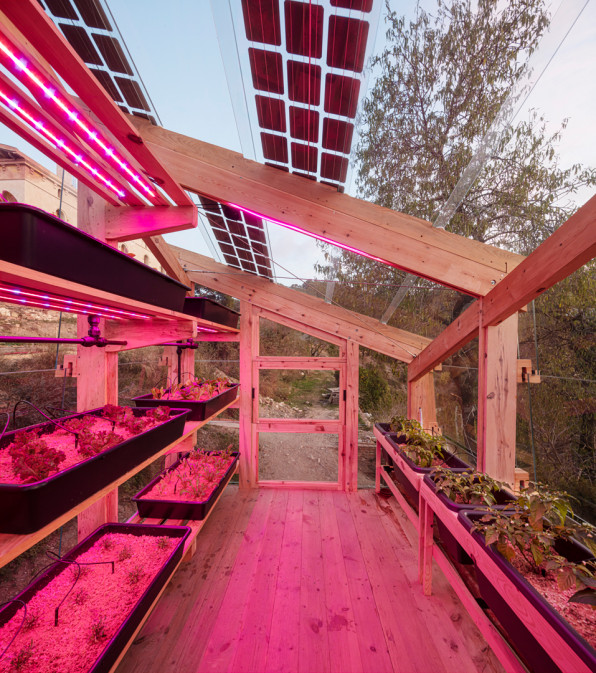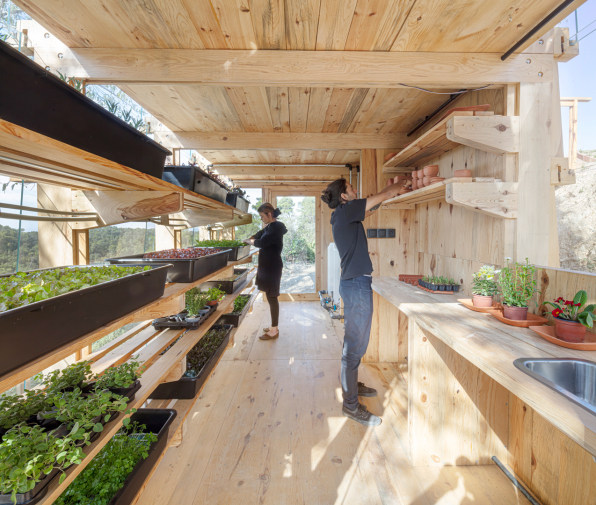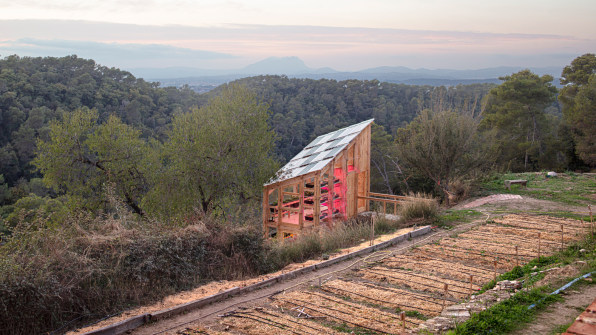- | 10:00 am
Students build a solar-powered greenhouse that produces 50% more energy than it uses

When greenhouses were popularized in the 19th century, they revolutionized the way plants and produce were grown. Today, greenhouses can maintain constant temperatures all year long, making them ideal for harsher climates. But here’s the catch: They’re very energy-intensive.
That is, unless they’re solar-powered.

[Photo: ©Adrià Goula/courtesy IAAC/Pati Nunez Agency]
In Barcelona’s Sierra de Collserola Natural Park, a group of architecture students recently built a prototype for a solar greenhouse that can grow its own food—and produce its own energy. Built from pine timber that was sourced from the region, the 130-square-foot greenhouse sits on a tiny plot of land next to Valldura Labs, a self-sufficient habitat research center. And while this greenhouse is located in nature, the concept can be replicated across city rooftops and refugee camps, where basic needs like food and energy are harder to meet.

[Photo: ©Adrià Goula/courtesy IAAC/Pati Nunez Agency]
The greenhouse was developed during a master’s program at the Institute for Advanced Architecture of Catalonia. The students lived on campus for a year and built the two-story structure in two months, led by architects Vicente Guallart and Daniel Ibáñez.
In 2014, Guallart wrote a book called The Self-Sufficient City. Then the chief architect of Barcelona, Guallart argued that buildings should be more productive and that we should produce food and energy locally. In many ways, the greenhouse is an interpretation of Guallard’s philosophy.

[Photo: ©Adrià Goula/courtesy IAAC/Pati Nunez Agency]
The structure is laid out across two floors: Plants germinate downstairs and then continue to grow upstairs. An angled glass roof helps capture sunlight during the day, while LED and UV light helps produce like lettuce, tomatoes, and eggplant grow at night. The roof is decked out with solar panels in a checkered pattern, while windows at the front and back can be opened for natural ventilation. An irrigation system infused with nutrients helps speed up the growth, as well. (As an added bonus, instead of soil, they used sawdust from the cut timber.)

[Photo: ©Adrià Goula/courtesy IAAC/Pati Nunez Agency]
Both the LED panels and the irrigation system are powered by the solar panels. The greenhouse only uses about 50% of the energy it produced, which left the other half for the nearby Valldura Labs facility. (Guallart says they could’ve covered the entire roof in solar panels and had 75% of energy left over, but budget restrictions made that difficult.)

[Photo: ©Adrià Goula/courtesy IAAC/Pati Nunez Agency]
The prototype was completed in September 2021, and it has already informed the design of a rooftop greenhouse for the highest timber building in Barcelona, which Guallart’s firm, Guallart Architects, is currently designing. At 1,600 square feet and 29 feet high, the greenhouse will be over 10 times bigger than the prototype. But solar greenhouses can be added on top of existing buildings, too. “If we decide we want to produce food and energy in our cities, we can do it, the only thing we need to do is adapt our buildings or make our buildings focused on that,” Guallart says. It all comes down to how many flat roofs your city has. (In Barcelona, he says about 80% are flat.)

[Photo: ©Adrià Goula/courtesy IAAC/Pati Nunez Agency]
For Guallart, the ultimate goal is to build communities that are able to grow their own food and produce their own energy. Outside of Beijing, Guallart Architects is now working on a self-sustaining housing complex with communal greenhouses and solar-powered roofs. “Instead of giving money to buy food and paying energy companies, we should empower communities and buildings by creating new infrastructures that will make them stronger, he says. “We can invest once and manage forever.”





































